Rob Bignell's Blog, page 317
November 5, 2014
Correct method for making ‘process’ plural
Sometimes the  right way of doing something looks wrong. Such is the case with the plural for the word process.
right way of doing something looks wrong. Such is the case with the plural for the word process.
Making the word plural involves simply adding an es to get processes, as in The Los Angeles-based manufacturer tried several different processes before settling on one single method of production.
Processes probably looks wrong because some people mispronounce it, saying “processeze”, just as they would pronounce the end of neuroses, which is the plural of neurosis. Who can blame them? After all, “processes” is really hard to roll off the tongue.
But process is not of Greek etymology, as is the word neurosis, so that method of pronouncing es as eze does not apply.
Need an editor? Having your book, business document or academic paper proofread or edited before submitting it can prove invaluable. In an economic climate where you face heavy competition, your writing needs a second eye to give you the edge. Whether you come from a big city like Madison, Wisconsin, or a small town like Possum Grape, Arkansas, I can provide that second eye.
Amazon.com Widgets
November 3, 2014
Project bible useful for keeping story ideas
Q: Sometimes 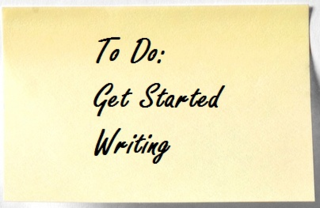 writing books and instructors recommend that writers a “project bible.” What is that?
writing books and instructors recommend that writers a “project bible.” What is that?
A project “bible” is a notebook of reference materials, usually kept in a 3-ring binder of looseleaf paper of story ideas that you’ve collected but not developed. Often when you’re doing something else, inspiration will strike on one of those ideas. You then can go back to the original idea and add your new idea to it. A project bible also gives you a collection of ideas you can go back to when you don’t know what to write about during daily writing sessions.
Related articles:
g Motivate yourself to write this year
g Writing Inspiration: My ideas are a shapeless mass that my writing molds into beauty
Need an editor? Having your book, business document or academic paper proofread or edited before submitting it can prove invaluable. In an economic climate where you face heavy competition, your writing needs a second eye to give you the edge. Whether you come from a big city like Cleveland, Ohio, or a small town like Roachtown, Illinois, I can provide that second eye.
<A HREF="http://ws-na.amazon-adsystem.com/widg... Widgets</A>Related articles
 Writing Inspiration: My ideas are a shapeless mass that my writing molds into beauty
Writing Inspiration: My ideas are a shapeless mass that my writing molds into beauty Types of third-person point of views
Types of third-person point of views
November 2, 2014
Five Great Quotations about Writer’s Block
“There’s no  such thing as writer's block. That was invented by people in California who couldn't write.” - Terry Pratchett
such thing as writer's block. That was invented by people in California who couldn't write.” - Terry Pratchett
“Authors with a mortgage never get writer’s block.” – Mavis Cheek
“The story I am writing exists, written in absolutely perfect fashion, some place, in the air. All I must do is find it, and copy it.” – Jules Renard
“A blank piece of paper is God’s way of telling us how hard it is to be God.” – Sidney Sheldon
“There is no such thing as writer’s block for writers whose standards are low enough.” – William Stafford
Need an editor? Having your book, business document or academic paper proofread or edited before submitting it can prove invaluable. In an economic climate where you face heavy competition, your writing needs a second eye to give you the edge. Whether you come from a big city like Memphis, Tennessee, or a small town like Eastabutchie, Mississippi, I can provide that second eye.
&amp;amp;amp;amp;amp;amp;amp;amp;amp;amp;amp;amp;amp;amp;amp;amp;lt;A HREF="http://ws-na.amazon-adsystem.com/widg... Widgets&amp;amp;amp;amp;amp;amp;amp;amp;amp;amp;amp;amp;amp;amp;amp;amp;lt;/A&amp;amp;amp;amp;amp;amp;amp;amp;amp;amp;amp;amp;amp;amp;amp;amp;gt;Related articles
 Let powerful energy of inner muse guide you
Let powerful energy of inner muse guide you Don't break circuit of suspense when it's hot
Don't break circuit of suspense when it's hot Why do we have two title pages?
Why do we have two title pages? Editing client publishes dystopian novel
Editing client publishes dystopian novel Draw attention to book via article directories
Draw attention to book via article directories
November 1, 2014
Today's Writing Inspiration: Your first written sentence is the foundation of all of your dreams
You dream 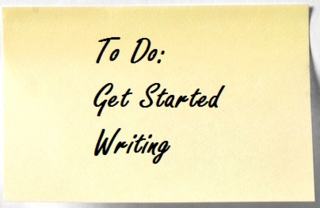 of being a published author. That necessitates, of course, that you first have a book or a short story or a freelance article that can be published.
of being a published author. That necessitates, of course, that you first have a book or a short story or a freelance article that can be published.
Forget about editing, formatting, choosing a print on demand house, or marketing your book. All of those unknowns and hazy elements of achieving your dream do not matter now. To concern yourself with them is like constructing the roof of a tower before erecting the supporting beams to hold it in place. Sure, learning about those topics in advance helps you better visualize what you’re getting into. But that research really doesn’t get you any closer to being a published author.
No, the first brick in building your dreams is to write that book, short story or freelance article. And a good place to start is with the opening sentence.
When readers go through your book/story/article, that first sentence or two sets the tone of what awaits them. You can’t hold off until your third or fourth sentence to coax them to come inside your creation. They’ll instead move on.
In many ways, that first sentence sets the tone for your writing effort as well. From the opening line springs the second sentence and then the third. If the main character is doing something in that opening sentence, the second sentence must flow from it by telling what he does next. Choose one action over another – say running rather than throwing a counterpunch – and you have an entirely different story, as certainly as choosing red brick over a glass pane will result in buildings that look completely different.
Have you written your manuscript’s first sentence yet? Do so now. You cannot achieve your dreams until you do.
Need an editor? Having your book, business document or academic paper proofread or edited before submitting it can prove invaluable. In an economic climate where you face heavy competition, your writing needs a second eye to give you the edge. Whether you come from a big city like Wichita, Kansas, or a small town like Bird In Hand, Pennsylvania, I can provide that second eye.
&amp;amp;lt;A HREF="http://ws-na.amazon-adsystem.com/widg... Widgets&amp;amp;lt;/A&amp;amp;gt;Related articles
 Avoid using weak pushbutton words in story
Avoid using weak pushbutton words in story How to use Track Changes on your manuscript
How to use Track Changes on your manuscript How to get rid of Word's proofreading marks
How to get rid of Word's proofreading marks
October 31, 2014
Boost book sales via backlinks to your website
Among the  best ways to crank up book sales is to get your title or name as an author at the top of the search engine list. That is, if you write car maintenance guidebooks when someone Googles “car maintenance guidebooks” and your website appear in the first couple of listings – or at least in the top 10 (usually the first page of returned searches) – you’ve greatly improved your visibility and hence increased your chances of a book sale. A good way to boost your ranking on search engines is through backlinks.
best ways to crank up book sales is to get your title or name as an author at the top of the search engine list. That is, if you write car maintenance guidebooks when someone Googles “car maintenance guidebooks” and your website appear in the first couple of listings – or at least in the top 10 (usually the first page of returned searches) – you’ve greatly improved your visibility and hence increased your chances of a book sale. A good way to boost your ranking on search engines is through backlinks.
Backlinks are links on other websites that send people to your website or blog. The more backlinks the better. In addition, the higher the listing of a website when an Internet search is conducted, the more valuable that backlink is in boosting your site’s ranking.
There are plenty ways to get backlinks. You might guest blog at another site. You might ask bloggers who write about topics related to your book to include a link. You might use social media such as Goodreads, LinkedIn, Facebook and Twitter. You might be the subject of a newspaper article that appears online. In short, every effort you make to boost awareness of your book ought to include a link that brings readers back to your website’s home page and hence improves its visibility.
Be aware that obtaining backlinks must be a sustained effort in your marketing. The older the article or blog post or tweet, the less likely it is to be seen, and hence the value of that backlink falls off. If you succeed in raising your website’s visibility this month with backlinks, two months from now your site’s ranking inevitably will decline – unless you find new places to include backlinks.
One last tip: Be careful of scams promising to bring “millions of viewers to your websites” by taking care of the backlinks for you. Often those companies place those backlinks on very low quality websites that no one ever views and that actually can hurt your ranking in the search engine algorithms.
Need an editor? Having your book, business document or academic paper proofread or edited before submitting it can prove invaluable. In an economic climate where you face heavy competition, your writing needs a second eye to give you the edge. Whether you come from a big city like Youngstown, Ohio, or a small town like Hogshooter, Oklahoma, I can provide that second eye.
<A HREF="http://ws-na.amazon-adsystem.com/widg... Widgets</A>Related articles
 Draw attention to book via article directories
Draw attention to book via article directories
October 30, 2014
Does a self-published author need to incorporate?
When self-publishing 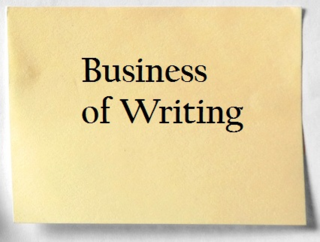 a book, you essentially are starting a business. So should you incorporate?
a book, you essentially are starting a business. So should you incorporate?
Most authors will say the general answer is “no.”
After all, incorporation (such as becoming a “limited liability corporation” or LLC) provides little benefit to the author. The main reason that businesses incorporate is to protect the owner’s personal assets (such as his home, car, investments) in case the company should be sued. When authors land in court for their work, it typically is for defamation, infringement or invasion of privacy – claims that are based on your individual conduct. Hence, being a corporation provides no shield for you.
In addition, many authors find the cost of incorporation generally is far greater than revenues from a self-published book’s sales. You will need to earn several hundred dollars annually from sales or you’ll actually be spending more money on government licenses and fees than you earn from the business. There’s little economic sense in incorporating when you can run a business without doing so.
Indeed, rather than incorporating, most authors opt to be a sole proprietorship. No legal documents usually are required to say that you are in business, so long as the name of your business (if you name it at all) matches or includes your actual name.
Of course, some authors do find a benefit to incorporating. For example, if you have a series of books and annually earn thousands of dollars from their sales, incorporation might be able to save you some tax dollars. In addition, if you have formed a publishing company that does more than serve as a fictitious name for your published works – for example, it publishes other people’s books as well as your own and has employees – incorporating is a good idea.
A final note: This post merely reports the current norm in the self-publishing industry and does not constitute advice. Especially if your situation is unique, always consult an attorney and tax consultant before making a final decision.
Need an editor? Having your book, business document or academic paper proofread or edited before submitting it can prove invaluable. In an economic climate where you face heavy competition, your writing needs a second eye to give you the edge. Whether you come from a big city like Provo, Utah, or a small town like Dismal, Tennessee, I can provide that second eye.
&amp;amp;amp;amp;amp;amp;lt;A HREF="http://ws-na.amazon-adsystem.com/widg... Widgets&amp;amp;amp;amp;amp;amp;lt;/A&amp;amp;amp;amp;amp;amp;gt;Related articles
 Should you buy publisher's insurance?
Should you buy publisher's insurance? Obtain DBA if creating your own imprint
Obtain DBA if creating your own imprint How to get rid of Word's proofreading marks
How to get rid of Word's proofreading marks
October 29, 2014
Hat-trick of confusion: There vs. their vs. they’re
If this  set of spelling errors could be placed anywhere, it ought to be in other people’s trash cans. Yet some writers continue to wrongly use the terms while acting as if they are correct.
set of spelling errors could be placed anywhere, it ought to be in other people’s trash cans. Yet some writers continue to wrongly use the terms while acting as if they are correct.
There refers to place: He’s going to Los Angeles. While there, he will meet with studio executives.
There means that more than one person owns something: Jake and Emily went to Chicago. Their itinerary includes visiting the Sears Tower.
They’re is a contraction of “they are”: Jake and Emily like to travel. They’re going to New York City for New Year’s Eve.
The phrase there are never should be written as the contraction they’re.
Need an editor? Having your book, business document or academic paper proofread or edited before submitting it can prove invaluable. In an economic climate where you face heavy competition, your writing needs a second eye to give you the edge. Whether you come from a big city like Charlotte, North Carolina, or a small town like Butts, Georgia, I can provide that second eye.
<A HREF="http://ws-na.amazon-adsystem.com/widg... Widgets</A>
Related articles
 Use social media to market your book
Use social media to market your book Don't shrug off this bad writing habit
Don't shrug off this bad writing habit
October 28, 2014
Rotate third-person limited to avoid issues
Sometimes writers  structure their book so that the third-person limited point of view alternates from scene to scene between major characters in a book. However, within each scene, only one of those characters’ point of view is used. This literary device is known as third-person rotating limited.
structure their book so that the third-person limited point of view alternates from scene to scene between major characters in a book. However, within each scene, only one of those characters’ point of view is used. This literary device is known as third-person rotating limited.
I used this technique in my novel Windmill. Each scene switches to the perspective of one of the four main characters. Their stories overlap to form the larger novel, with each character akin to a windmill’s turning blades, each metal sliver catching the glint of the sun (The sun is a symbol in the book for “truth.”) in a slightly different way. Each character symbolized a unique approach to an issue, so seeing how they incrementally dealt with obstacles arising in the plot aided in the examination of the book’s theme.
Indeed, such a storytelling technique offers several advantages:
g Can get inside more than one character’s head – A story told solely in first-person, second-person, and third-person limited points of view can only be told from one character’s perspective. As with third-person omniscient, a rotating point of view allows the writer to tell the thoughts and feelings of multiple characters; unlike third-person omniscient, however, rotating the third-person limited perspective allows the writer to hyperfocus on each character.
g Lacks omniscient point of view’s disadvantages of being impersonal and implausible – Third-person limited allows writers to tell a story from a more personalized perspective, allowing the reader to better connect with the character; rotating allows for this connection to exist between the reader and multiple characters. In addition, since each of the main characters’ motivations will be better understood, some behaviors by characters won’t appear inexplicable, as they might in an omniscient narrative.
g Maintains a consistent narrative voice for each character – When using an omniscient viewpoint, many novice writers try to make the narrative’s tone imitate the character’s personality. Called the imitative fallacy, this results in a disjointed voice or rhythm to the narration. Focusing on the perspective of a single character in a scene, however, usually eliminates this problem. A rotating point of view allows each of the major character’s personalities to come out in a way that reads smoothly.
The literary device sometimes is referred to in literary circles as episodically limited third person omniscient.
Need an editor? Having your book, business document or academic paper proofread or edited before submitting it can prove invaluable. In an economic climate where you face heavy competition, your writing needs a second eye to give you the edge. Whether you come from a big city like Fresno, California, or a small town like Frizzleburg, Pennsylvania, I can provide that second eye.
Amazon.com Widgets
Related articles How to overcome annoying writer's block
How to overcome annoying writer's block Create successful story by staging it
Create successful story by staging it
October 27, 2014
Twist endings best avoided in storytelling
There’s a 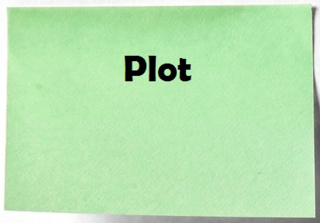 tale from the early 2000s about a group of women spelunkers who are trapped after a cave-in. Unfortunately for them, there’s a monster that’s also underground and begins picking them off one by one. Fortunately one of them through her wits and physically prowess escapes. Then, just as she enters the liberating sunshine, she wakes up. The escape has been a dream, and she’s still trapped underground.
tale from the early 2000s about a group of women spelunkers who are trapped after a cave-in. Unfortunately for them, there’s a monster that’s also underground and begins picking them off one by one. Fortunately one of them through her wits and physically prowess escapes. Then, just as she enters the liberating sunshine, she wakes up. The escape has been a dream, and she’s still trapped underground.
If you let out a groan, then like most readers you’ve had it with twist endings. Also known as O. Henry endings and Twilight Zone endings, these surprise conclusions to your story are best avoided.
The reality is that twist endings rarely work except for young, novice readers who are seeing them for the first time (which may be why so many young, novice writers pen such endings!). Why don’t they work for older readers? Because the ending undermines the story’s whole premise. The writer has set up the reader for one thing but then tricks him.
No one likes having a joke played on him.
The twist ending betrays the psychology of the reader-writer relationship. After all, a writer must convince the reader that the story is worth reading in large part by presenting a stimulating character and an intriguing problem to be solved. If a reader sticks with the story, he’ll feel cheated when the author undermines those two promises, however. Take the spelunker story above. The twist ending tells the reader that the character isn’t truly stimulating because she doesn’t use her wits or physical prowess to survive; further, the problem to be solved really isn’t intriguing because the author implies that it’s unsolvable (We all know there’s no way for Bambi to defeat Godzilla, after all, so it’s not much of a story.). In short, the twist ending is the old bait-and-switch.
Of course, sometimes the twist ending does work (and even is expected, as in “The Twilight Zone” episodes). For example, the twist ending might be a contes cruels, a French term in which the ending/punchline is meant to horrify readers. This occurs in the original 1968 “Planet of the Apes” movie. As the story nears its end, the main character, astronaut George Taylor, gains his freedom from the cruel apes, thus resolving the story’s central problem. The movie could have went to credits there, but tacked onto the film is Taylor stumbling across a half-buried Statue of Liberty, horrifying the viewer into realizing that humanity destroyed itself and hence created its inferior status as a second-class animal. This serves as an anti-war statement that doesn’t alter the reader’s understanding of the character or the story’s central problem.
Need an editor? Having your book, business document or academic paper proofread or edited before submitting it can prove invaluable. In an economic climate where you face heavy competition, your writing needs a second eye to give you the edge. Whether you come from a big city like Denver, Colorado, or a small town like Dewey Beach, Delaware, I can provide that second eye.
&amp;amp;amp;lt;A HREF="http://ws-na.amazon-adsystem.com/widg... Widgets&amp;amp;amp;lt;/A&amp;amp;amp;gt;
October 26, 2014
Five Great Humorous Thoughts on Writing
“I love 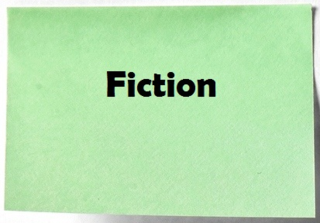 being a writer. What I can't stand is the paperwork.” - Peter de Vries
being a writer. What I can't stand is the paperwork.” - Peter de Vries
“He was such a bad writer, they revoked his poetic license.” - Milton Berle
“Having been unpopular in high school is not just cause for book publication.” - Fran Lebowitz
“I'm writing a book. I've got the page numbers done.” - Stephen Wright
“Either a writer doesn't want to talk about his work, or he talks about it more than you want.” - Anatole Broyard
Need an editor? Having your book, business document or academic paper proofread or edited before submitting it can prove invaluable. In an economic climate where you face heavy competition, your writing needs a second eye to give you the edge. Whether you come from a big city like Chicago, Illinois, or a small town like Humptulips, Washington, I can provide that second eye.
&amp;amp;amp;amp;amp;amp;amp;amp;amp;amp;amp;amp;amp;amp;lt;A HREF="http://ws-na.amazon-adsystem.com/widg... Widgets&amp;amp;amp;amp;amp;amp;amp;amp;amp;amp;amp;amp;amp;amp;lt;/A&amp;amp;amp;amp;amp;amp;amp;amp;amp;amp;amp;amp;amp;amp;gt;Related articles
 Five great quotations for aspiring writers
Five great quotations for aspiring writers Five great quotations about book critics
Five great quotations about book critics Editing clients publish first novel, 'Bad JuJu'
Editing clients publish first novel, 'Bad JuJu'



